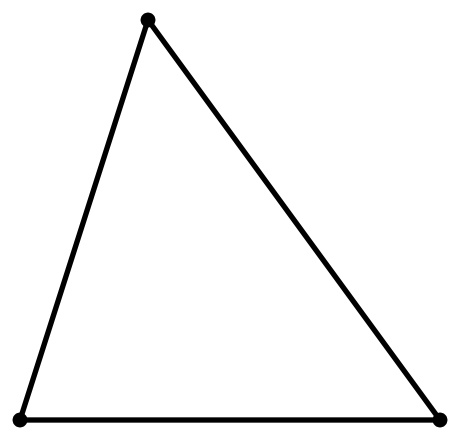Triangle Inequality

If two sides of the triangle above have lengths 6 and 12, the perimeter of the triangle could be which of the following?
Answer
Based on the 2 sides you entered of 6 and 12, determine the applicable range of values for the 3rd side so it forms a triangle:
The Triangle Inequality states that the sum of any 2 sides of a triangle must be greater than the 3rd side
Therefore, we need to find a high range and low range for the 3rd side as seen below
Find the high range value for the 3rd side:
Since the sum of the 2 sides must be greater than the 3rd side, add the 2 sides:
Side 1 + Side 2 = 6 + 12
Side 1 + Side 2 = 18
Find the low range - we want to take the difference between the large and small side:
Side 2 - Side 1 = 12 - 6
Side 2 - Side 1 = 6
Now we've figured out how the 3rd side will be less than the sum of the 2 sides and greater than the difference of the 2 sides, so we form our inequality:
6 < Side 3 < 18
Perimeter of a Triangle = Sum of the 3 sides. We need to use the 2 possible values for Side 3 to determine the perimeter.
Determine Possible Perimeter 1 Triangle
Perimeter 1 < Side 1 + Side 2 + Low Value for Side 3Perimeter 1 < 6 + 12 + 6
Perimeter 1 < 24
Determine Possible Perimeter 2 Triangle
Perimeter 2 > Side 1 + Side 2 + High Value for Side 3Perimeter 2 > 6 + 12 + 18
Perimeter 2 > 36
Therefore, our Triangle Perimeter range is 24 < Perimeter < 36






